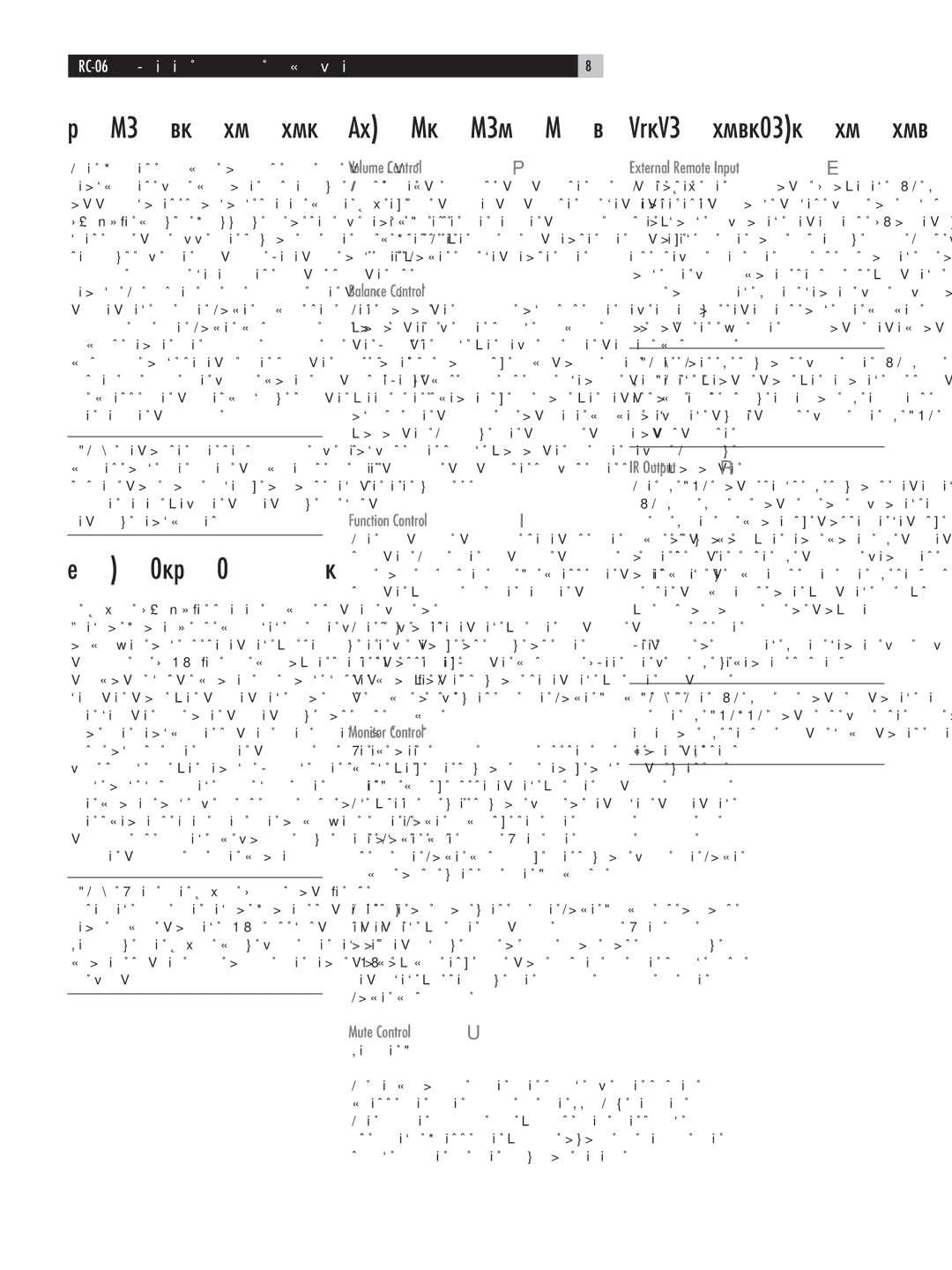RC-06 specifications
The Rotel RC-06 is a distinguished preamplifier that elevates the listening experience through its advanced features and robust design. Known for its dynamic performance and precision, the RC-06 serves as the ideal hub in high-fidelity audio systems, ensuring seamless integration with various audio components.One of the standout features of the RC-06 is its high-quality, low-noise circuitry, which enhances audio clarity and minimizes distortion. At the heart of its design, Rotel incorporates the renowned Balanced Mode Radiator technology, allowing for superior audio reproduction. This advanced circuitry ensures that every nuance of your favorite music is faithfully captured, from the softest whisper to the most powerful crescendos.
Users will appreciate the RC-06's versatility, featuring multiple input options, including RCA and balanced XLR connections. This allows for easy connection to a variety of audio sources, such as CD players, turntables, and digital streaming devices. Additionally, the preamp provides customizable output levels, enabling precise control over your audio system.
Equipped with a high-quality volume control, the RC-06 minimizes signal loss while providing smooth and accurate adjustments. The motorized volume control is not only convenient but also enhances the aesthetic of the unit, delivering a premium feel to the listening experience. Moreover, a remote control is included, granting users the flexibility to adjust settings from a distance.
The construction of the RC-06 reflects Rotel's commitment to quality and durability. The chassis is designed to shield against electromagnetic interference, which is crucial for maintaining audio integrity. The components used in the RC-06 have been meticulously selected to ensure long-lasting performance, further underlining Rotel’s reputation for excellence in audio engineering.
In summary, the Rotel RC-06 preamplifier combines innovative technologies with high-quality construction, catering to audiophiles who demand exceptional sound and functionality from their audio components. Its rich feature set, including versatile connectivity options and advanced circuitry, positions the RC-06 as a cornerstone in any serious listening environment, ensuring that music is experienced at its absolute best. Whether used in a simple stereo setup or as part of a complex surround sound system, the RC-06 thrives, providing a listening experience that is both immersive and rewarding.

